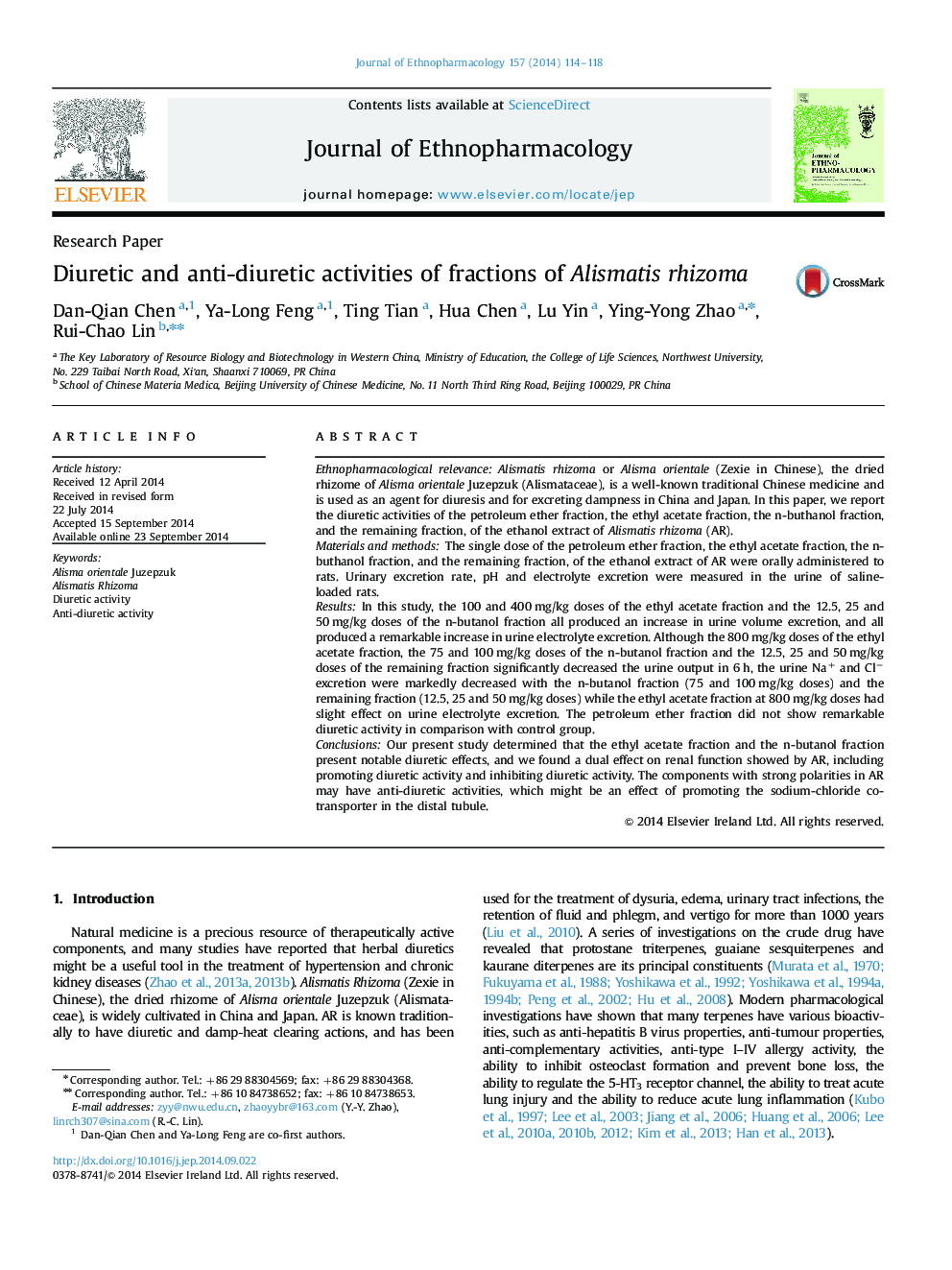| کد مقاله | کد نشریه | سال انتشار | مقاله انگلیسی | نسخه تمام متن |
|---|---|---|---|---|
| 5836196 | 1560404 | 2014 | 5 صفحه PDF | دانلود رایگان |

Ethnopharmacological relevanceAlismatis rhizoma or Alisma orientale (Zexie in Chinese), the dried rhizome of Alisma orientale Juzepzuk (Alismataceae), is a well-known traditional Chinese medicine and is used as an agent for diuresis and for excreting dampness in China and Japan. In this paper, we report the diuretic activities of the petroleum ether fraction, the ethyl acetate fraction, the n-buthanol fraction, and the remaining fraction, of the ethanol extract of Alismatis rhizoma (AR).Materials and methodsThe single dose of the petroleum ether fraction, the ethyl acetate fraction, the n-buthanol fraction, and the remaining fraction, of the ethanol extract of AR were orally administered to rats. Urinary excretion rate, pH and electrolyte excretion were measured in the urine of saline-loaded rats.ResultsIn this study, the 100 and 400Â mg/kg doses of the ethyl acetate fraction and the 12.5, 25 and 50Â mg/kg doses of the n-butanol fraction all produced an increase in urine volume excretion, and all produced a remarkable increase in urine electrolyte excretion. Although the 800Â mg/kg doses of the ethyl acetate fraction, the 75 and 100Â mg/kg doses of the n-butanol fraction and the 12.5, 25 and 50Â mg/kg doses of the remaining fraction significantly decreased the urine output in 6Â h, the urine Na+ and Clâ excretion were markedly decreased with the n-butanol fraction (75 and 100Â mg/kg doses) and the remaining fraction (12.5, 25 and 50Â mg/kg doses) while the ethyl acetate fraction at 800Â mg/kg doses had slight effect on urine electrolyte excretion. The petroleum ether fraction did not show remarkable diuretic activity in comparison with control group.ConclusionsOur present study determined that the ethyl acetate fraction and the n-butanol fraction present notable diuretic effects, and we found a dual effect on renal function showed by AR, including promoting diuretic activity and inhibiting diuretic activity. The components with strong polarities in AR may have anti-diuretic activities, which might be an effect of promoting the sodium-chloride co-transporter in the distal tubule.
121
Journal: Journal of Ethnopharmacology - Volume 157, 18 November 2014, Pages 114-118